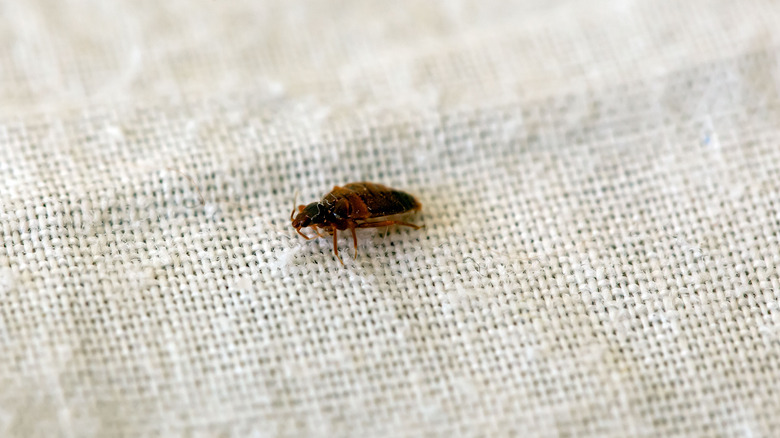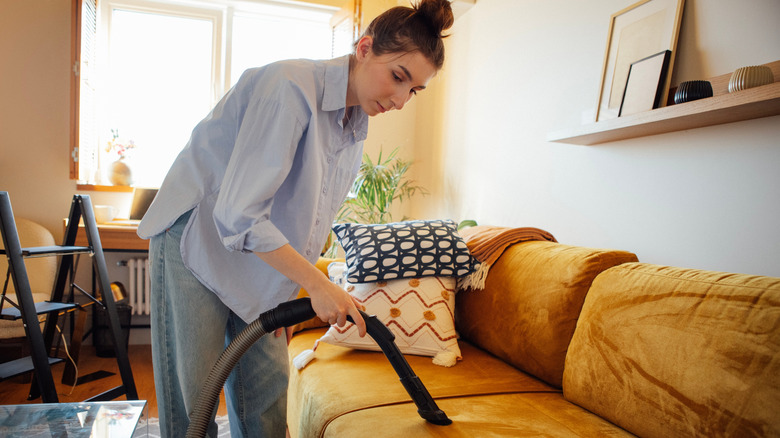How To Prepare Your Space For Bed Bug Treatment
Bed bugs are opportunistic pests that don't discriminate; they'll take up residence in any house, clean or dirty, just as long as there's a food source nearby. Some dead giveaways you have bed bugs sleeping with you include rust-colored stains on your sheets or mattress, small itchy bites on your skin, or pale yellow eggs or casings near the seam of your mattress or around crevices. Since they're notoriously hard to get rid of, it's wise to seek treatment at the first sign your home's been invaded. Whether you tackle the treatment yourself or hire a pro, there are a few steps to preparing your space you'll need to take. Decluttering your home, prepping your bed, and deep cleaning living areas are all must-dos.
Prepping your bed is one of the 8 best ways to get rid of bed bugs, making it a great starting place. To do this, you'll need a tight-fitting, zippered bed bug-proof encasement for your mattress and box spring, a vacuum, and bed bug interceptors, which look like small plastic dishes that go under the feet of your bed. Start by pulling your bed 6 inches from the wall. Then, strip all bedding and immediately wash and dry it on high heat. Next, place bed bug-proof mattress covers on your bed and box spring. Thoroughly vacuum every square inch of your bed frame, headboard, and footboard, including small crevices. With the bed thoroughly cleaned, you can place the mattress and box spring back on the frame. As the final step, put the bug interceptors under the feet of the bed, and replace bedding when it's been washed and dried.
Preparing the rest of the home for bed bug treatment
When preparing for a bed bug treatment, you need to ruthlessly declutter. The fewer places for bed bugs to hide in your home, the easier it will be to treat the space. Go through your main living areas, especially where people sleep or hang out at night, and get rid of all the items that you don't need, use, or want. The items you declutter should be placed in plastic trash bags and taken outside whenever you've filled a bag or have finished decluttering. You'll also need to get rid of any cardboard boxes in your home, since bed bugs like to hide out in cardboard.
Once items are decluttered, deep-clean the area. Any fabric item that can go in the dryer should be run on your highest heat cycle for at least 30 minutes, and then be sealed in a plastic bag afterward. Whatever you can't launder at the time should be placed in a sealed plastic bag. You'll also need to vacuum furniture, floors, and baseboards. Check windows, outlets and switch covers, and any other cracks and crevices for signs of bed bug droppings or eggs and vacuum if needed. Continue vacuuming regularly throughout the bed bug elimination process, and make sure to immediately dispose of your vacuum bag or canister contents in a sealed plastic bag outside your home. Thoroughness is important so that you don't repeat the mistakes everyone makes when dealing with bed bugs.

